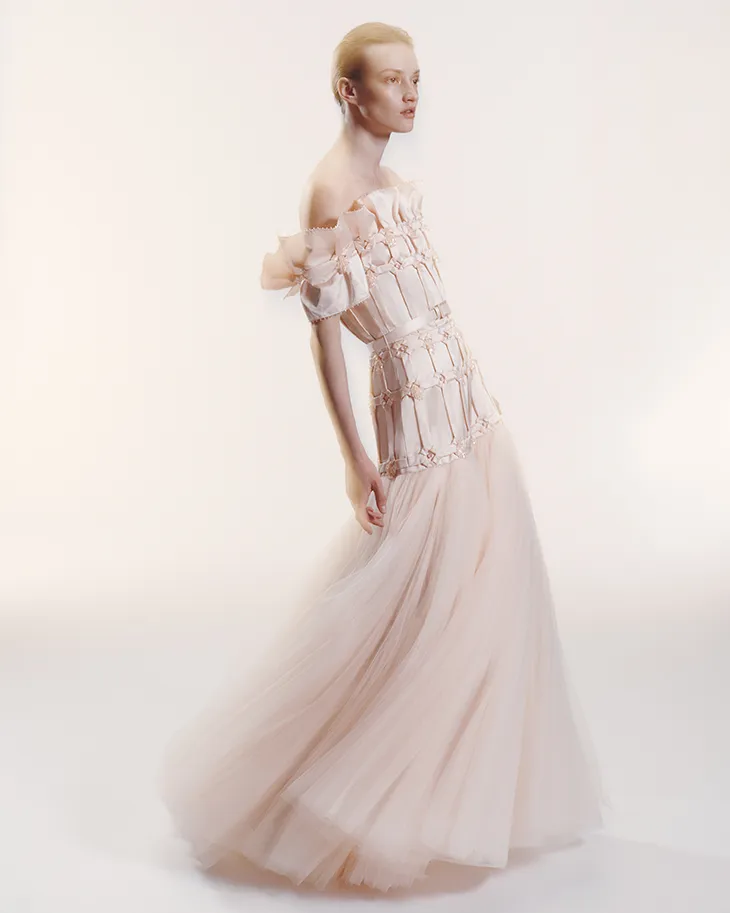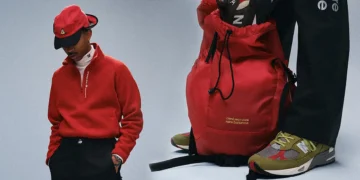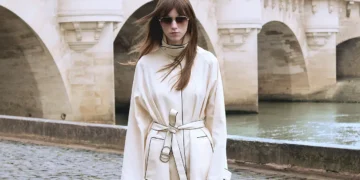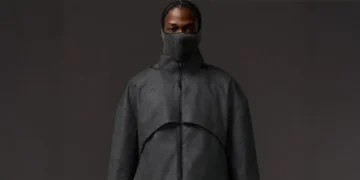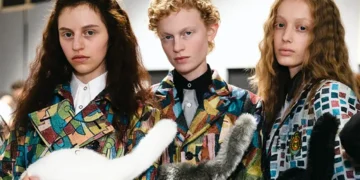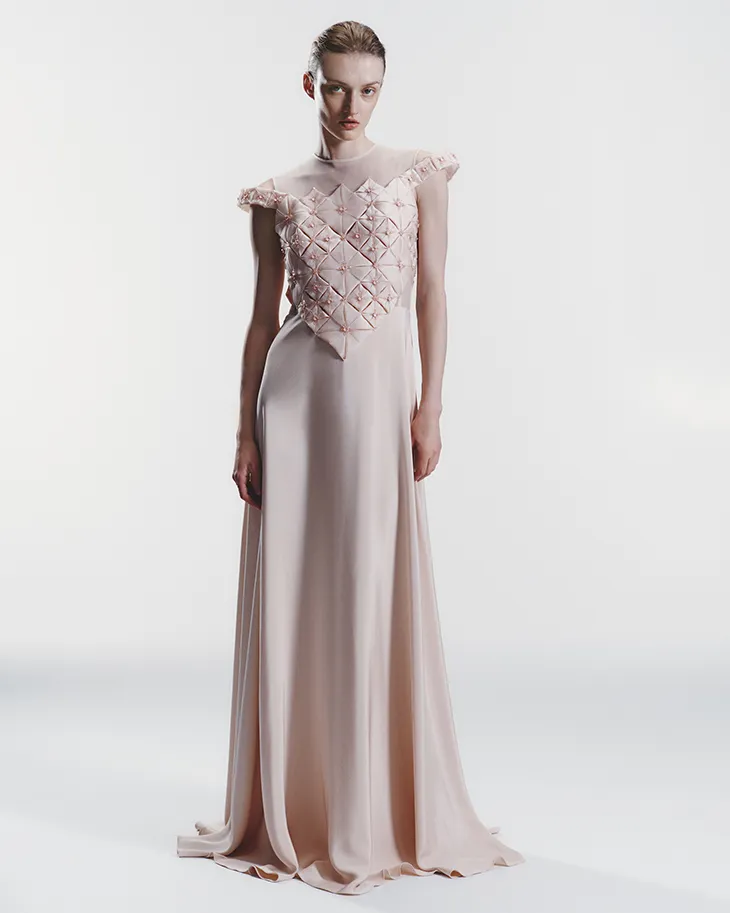
by FANG presents its Fall Winter 2025.26 couture collection, establishing a design philosophy rooted in structural clarity and geometric precision. Founded by Fang Yang and Grégoire Caillol, the brand operates between Paris and Shanghai, drawing creative energy from both fashion capitals.
The brand anchors its approach in zhezhi, the traditional Chinese practice of paper folding. This ancient technique serves as their primary design framework, transforming how they manipulate fabric and construct garments. The folding method enables them to create shape without relying on conventional cutting or layering techniques.
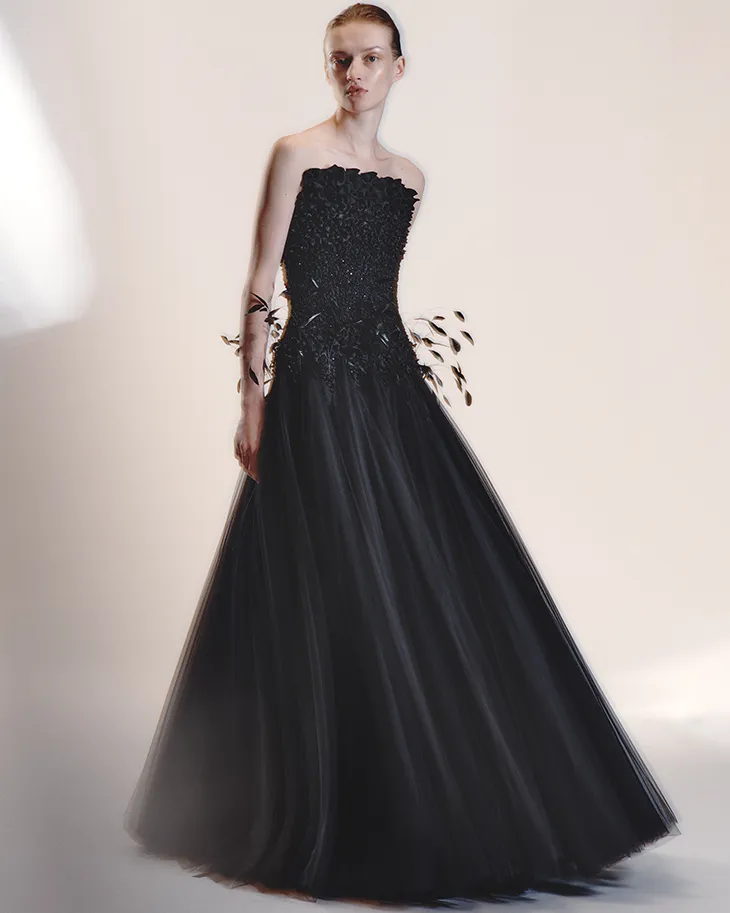
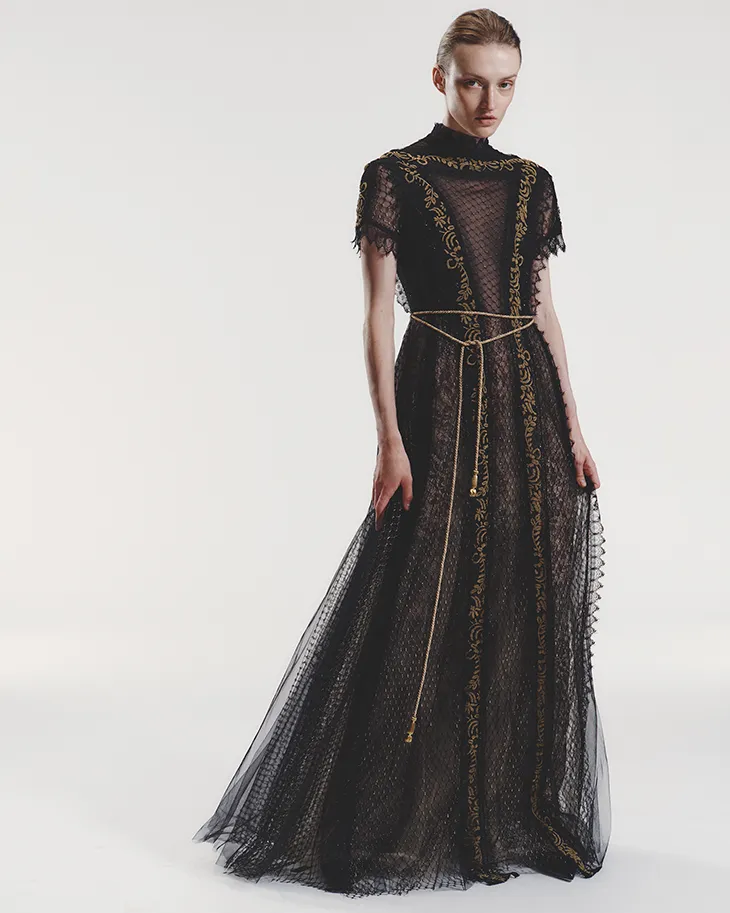
Each garment demonstrates how fabric can be pressed, directed, and sculpted into three-dimensional forms. The materials maintain tension while preserving their structural integrity, never threatening to collapse under their own weight. This construction philosophy drives every design decision throughout the collection.
The collection opens with ethereal gowns that flow in soft blush, ivory, and cream tones. The brand layers tulle, satin, and mesh with mathematical precision, building each garment through careful material selection. Dense floral embroidery decorates bodices and sleeves in concentrated patterns that create focal points throughout the silhouettes.
A sheer dress demonstrates the brand’s technical mastery, featuring an embroidered chest that anchors a multi-layered skirt construction. The design creates the illusion of weightless movement while exercising complete control at the waist and hip. This garment shows how by FANG manipulates opposing design elements within a single form.
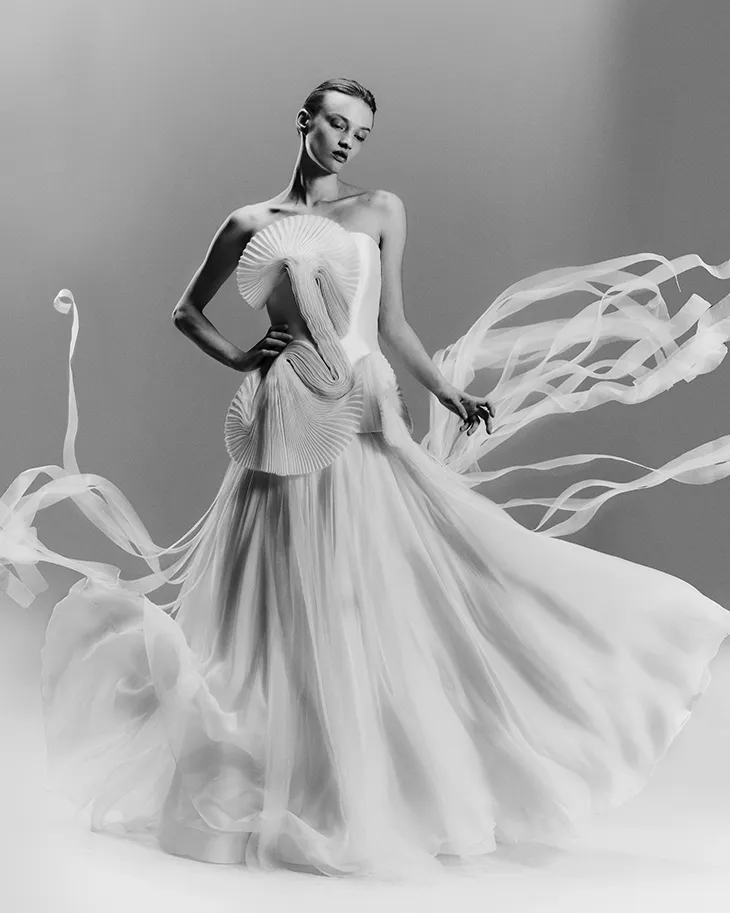
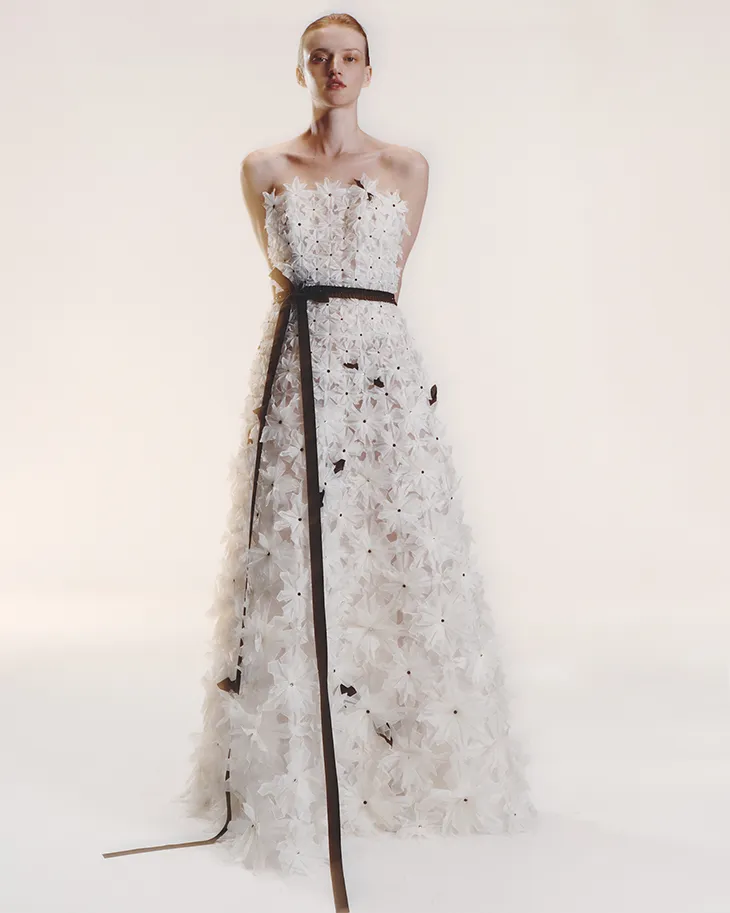
The brand introduces dramatic geometric interventions through strategic cutouts and paneling systems. A white gown transforms into a living grid, where black squares march systematically from chest to hem, creating visual punctuation marks that divide the garment’s surface. Each square maintains identical proportions, establishing a rhythm that transforms the dress into wearable architecture.
Sculptural elements emerge in another design, where curved folds lift from the waist and project into space as floating arcs. These dimensional components maintain perfect equilibrium while creating negative space between fabric and body. The construction reveals how by FANG engineers garments that defy conventional silhouette expectations.
The palette deepens as black enters through sleek fitted silhouettes that merge mesh and satin materials. The brand pairs bodices with structured foundations, creating sophisticated plays between revelation and concealment.
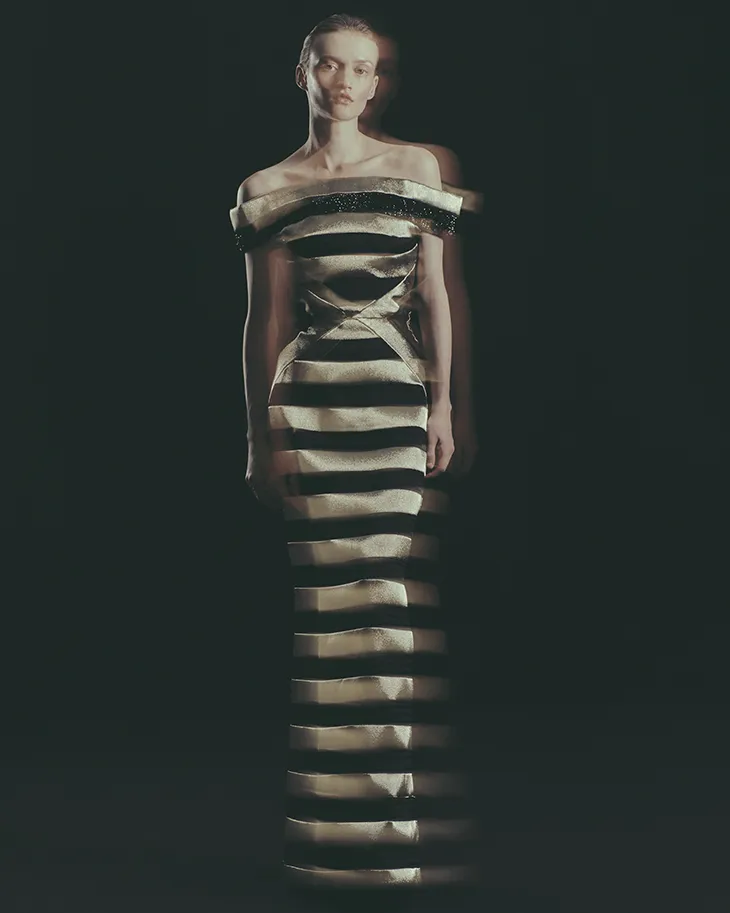
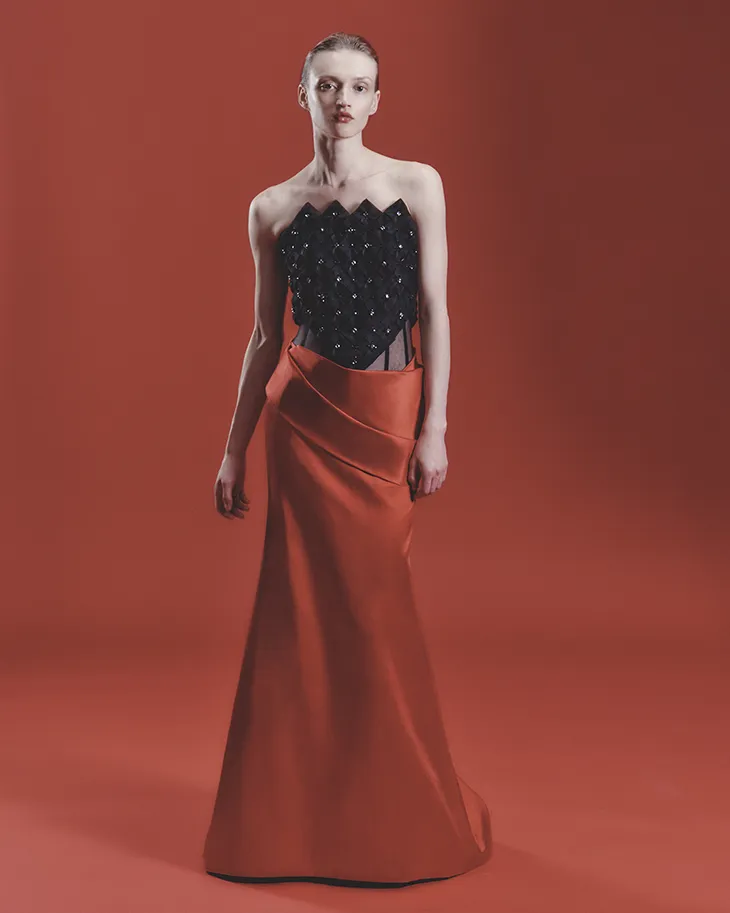
The collection reaches its crescendo with red garments that command attention through structural innovation. An openwork knit dress creates a body-hugging lattice that maps the figure while exposing the space beneath. The construction technique transforms traditional knitwear into architectural framework, demonstrating how by FANG reimagines familiar materials. The collection concludes with a flowing red skirt that pairs with a densely beaded black bodice, creating color contrast that maintains the proportional harmony established throughout the entire presentation.
Throughout the collection, the designers maintain their focus on construction as the primary means of creating visual impact. They rely on material manipulation and technical execution to shape each silhouette, avoiding decorative excess in favor of structural innovation. The zhezhi influence remains visible in every fold, every angle, and every measured volume.
